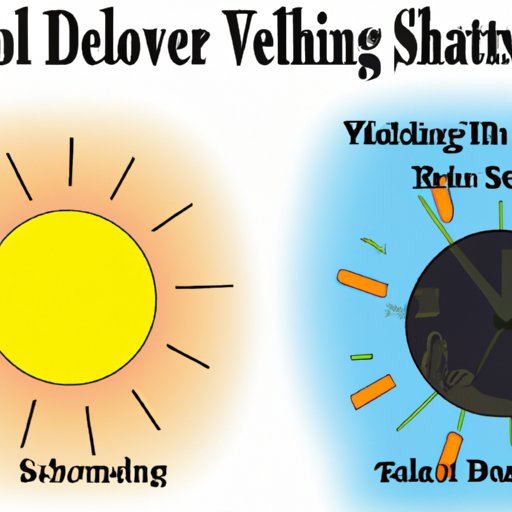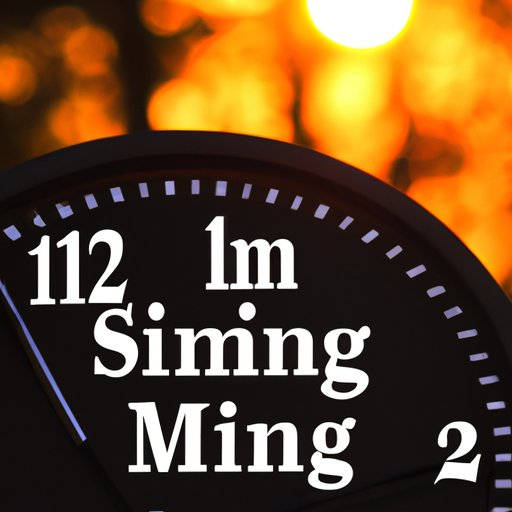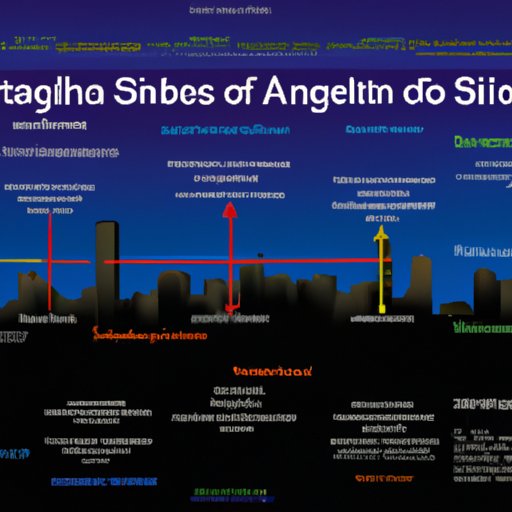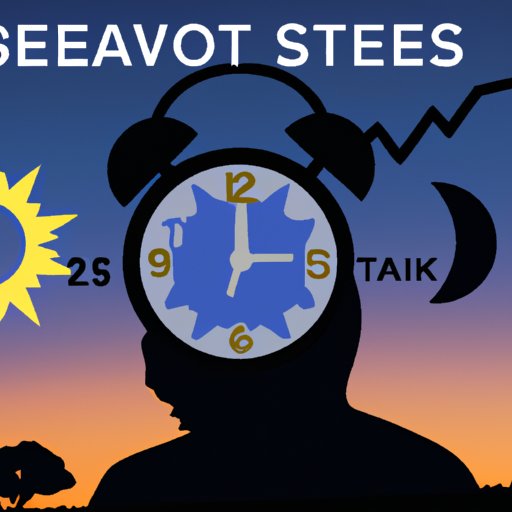Introduction
Daylight Saving Time (DST) is a system that alters the clock so that daylight hours are extended during certain times of the year. It is observed in most parts of the world, with some exceptions such as Hawaii, Arizona and parts of Indiana in the United States. Although the history of Daylight Saving Time stretches back to ancient civilizations, its modern form has been in use since the early 1900s. This article explores the origins and rationale behind establishing Daylight Saving Time, as well as its advantages and impacts on society.
Exploring the History of Daylight Saving Time
The concept of Daylight Saving Time was first proposed by Benjamin Franklin in 1784, although he did not advocate for its implementation. He suggested that people should wake up earlier in order to make better use of daylight hours instead of sleeping through them. The idea of changing the clocks to extend daylight hours came about in 1895 when George Hudson, an entomologist from New Zealand, proposed a two-hour time shift so he could have more after-work hours of sunlight for collecting insects.
Daylight Saving Time was officially implemented in Germany and Austria-Hungary in 1916 as a way to conserve fuel needed for war efforts. Several other countries soon followed suit and adopted the same practice. In the United States, Daylight Saving Time was being used in certain states prior to World War I, but it wasn’t until the Uniform Time Act of 1966 that it became nationally standardized.

The Rationale Behind Establishing Daylight Savings
There are several reasons why Daylight Saving Time was created. One of the primary motivations for implementing DST was to conserve energy. According to a 2008 study conducted by the U.S. Department of Energy, extending daylight hours can reduce electricity usage by up to 1 percent per day. By extending daylight hours, people are more likely to be outdoors enjoying natural light instead of using electricity indoors.
In addition to energy conservation, another reason why Daylight Saving Time was created was to make better use of daylight hours. By pushing the clock forward one hour in the springtime, people get an extra hour of daylight in the evening when they would otherwise be sleeping. This allows for more leisure time and outdoor activities during the summer months.

Exposing the Origins of Daylight Savings
The idea of Daylight Saving Time is often attributed to Benjamin Franklin, but he never advocated for its implementation. The credit for proposing the concept of shifting the clocks to extend daylight hours goes to George Hudson, an entomologist from New Zealand. In 1895, Hudson presented his idea of a two-hour time shift to the Wellington Philosophical Society, which received a favorable response.
Hudson’s proposal was not put into practice until 1916, when Germany and Austria-Hungary adopted Daylight Saving Time as a way to conserve fuel needed for their war efforts. Other countries soon followed suit, and in the United States, Daylight Saving Time became nationally standardized in 1966 with the passage of the Uniform Time Act.
Examining the Advantages of Daylight Savings
One of the major benefits of Daylight Saving Time is that it extends daylight hours during the summer months. By pushing the clock forward one hour in the springtime, people get an extra hour of daylight in the evening when they would otherwise be sleeping. This allows for more leisure time and outdoor activities during the summer months.
Daylight Saving Time also improves energy efficiency. A 2008 study conducted by the U.S. Department of Energy found that extending daylight hours can reduce electricity usage by up to 1 percent per day. By extending daylight hours, people are more likely to be outdoors enjoying natural light instead of using electricity indoors.
Finally, Daylight Saving Time has a positive effect on businesses. According to research from the University of California at Santa Barbara, businesses that operate during Daylight Saving Time can benefit from increased sales due to longer daylight hours. Additionally, businesses may see a decrease in operational costs due to lower energy consumption.
Investigating the Impacts of Daylight Savings
Although Daylight Saving Time has numerous benefits, there are also some potential drawbacks. One of the most significant impacts of DST is on sleep patterns. Studies have found that the time change associated with Daylight Saving Time can disrupt sleep cycles, leading to fatigue and decreased productivity.
Daylight Saving Time can also have a negative effect on mental health. Research has shown that the disruption of circadian rhythms caused by Daylight Saving Time can lead to increased levels of stress and depression. Additionally, a 2018 study found that the rate of suicides increases after the transition to Daylight Saving Time.
Finally, Daylight Saving Time can have an impact on wildlife. Many species are sensitive to changes in the length of daylight hours, and the transition to Daylight Saving Time can disrupt their migratory and reproductive cycles.

Debunking Common Myths Surrounding Daylight Saving Time
Despite its long history, there are still many misconceptions about Daylight Saving Time. One common myth is that it is no longer necessary. While it is true that the original purpose for establishing DST has become obsolete, the time change still provides a number of benefits.
Another common misconception is that Daylight Saving Time is a waste of energy. However, studies have shown that extending daylight hours can reduce electricity usage by up to 1 percent per day. Additionally, businesses that operate during Daylight Saving Time may see a decrease in operational costs due to lower energy consumption.
Finally, some people believe that changing the clocks is dangerous. While it is true that the time change can disrupt sleep patterns and cause fatigue, this is only temporary and the body eventually adjusts. Additionally, the time change is only one hour, so the effects are minimal.

Analyzing the Impact of Daylight Savings on Society
Daylight Saving Time has a number of implications for society. On a social level, the extended daylight hours allow for more leisure activities during the summer months. This can lead to increased tourism and economic activity in some regions.
The impacts of Daylight Saving Time can vary depending on location. For example, in northern regions, the extended daylight hours may have little effect, while in southern regions, the additional hour of daylight may be more beneficial. Additionally, some areas may choose to opt out of Daylight Saving Time altogether.
Conclusion
Daylight Saving Time is a system that alters the clock so that daylight hours are extended during certain times of the year. It was first proposed by Benjamin Franklin in 1784, but was not officially implemented until 1916 when Germany and Austria-Hungary adopted it as a way to conserve fuel for war efforts. There are several reasons why Daylight Saving Time was created, including energy conservation and making better use of daylight hours. Additionally, it has a number of benefits, such as extended daylight hours, improved energy efficiency and positive effects on businesses. However, there are also some potential drawbacks, such as disruptions to sleep patterns and impacts on mental health and wildlife. Despite these drawbacks, Daylight Saving Time still provides a number of social and economic benefits.
(Note: Is this article not meeting your expectations? Do you have knowledge or insights to share? Unlock new opportunities and expand your reach by joining our authors team. Click Registration to join us and share your expertise with our readers.)
